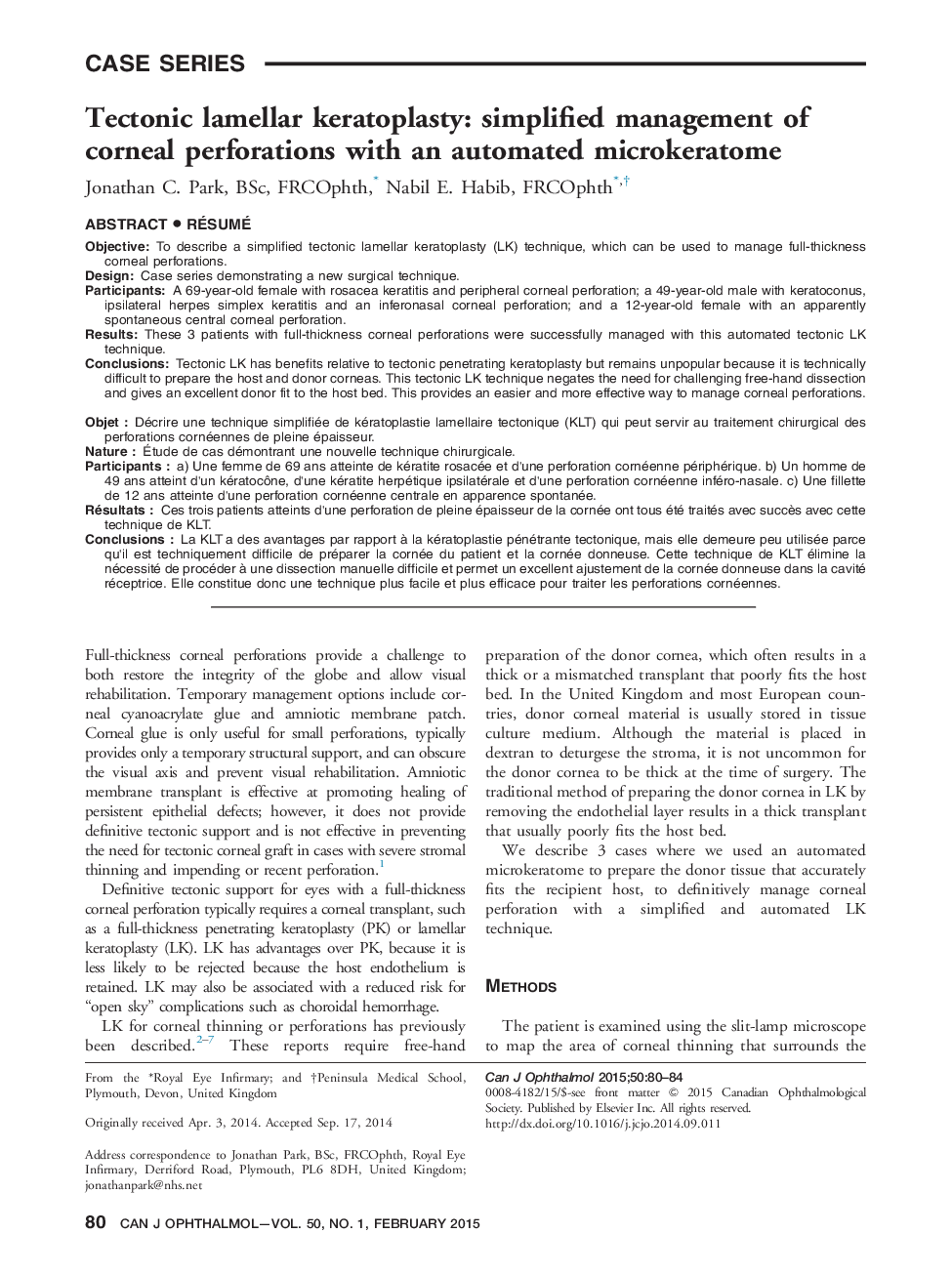| Article ID | Journal | Published Year | Pages | File Type |
|---|---|---|---|---|
| 4009121 | Canadian Journal of Ophthalmology / Journal Canadien d'Ophtalmologie | 2015 | 5 Pages |
ObjectiveTo describe a simplified tectonic lamellar keratoplasty (LK) technique, which can be used to manage full-thickness corneal perforations.DesignCase series demonstrating a new surgical technique.ParticipantsA 69-year-old female with rosacea keratitis and peripheral corneal perforation; a 49-year-old male with keratoconus, ipsilateral herpes simplex keratitis and an inferonasal corneal perforation; and a 12-year-old female with an apparently spontaneous central corneal perforation.ResultsThese 3 patients with full-thickness corneal perforations were successfully managed with this automated tectonic LK technique.ConclusionsTectonic LK has benefits relative to tectonic penetrating keratoplasty but remains unpopular because it is technically difficult to prepare the host and donor corneas. This tectonic LK technique negates the need for challenging free-hand dissection and gives an excellent donor fit to the host bed. This provides an easier and more effective way to manage corneal perforations.
RésuméObjetDécrire une technique simplifiée de kératoplastie lamellaire tectonique (KLT) qui peut servir au traitement chirurgical des perforations cornéennes de pleine épaisseur.NatureÉtude de cas démontrant une nouvelle technique chirurgicale.Participantsa) Une femme de 69 ans atteinte de kératite rosacée et d'une perforation cornéenne périphérique. b) Un homme de 49 ans atteint d'un kératocône, d'une kératite herpétique ipsilatérale et d'une perforation cornéenne inféro-nasale. c) Une fillette de 12 ans atteinte d'une perforation cornéenne centrale en apparence spontanée.RésultatsCes trois patients atteints d'une perforation de pleine épaisseur de la cornée ont tous été traités avec succès avec cette technique de KLT.ConclusionsLa KLT a des avantages par rapport à la kératoplastie pénétrante tectonique, mais elle demeure peu utilisée parce qu'il est techniquement difficile de préparer la cornée du patient et la cornée donneuse. Cette technique de KLT élimine la nécessité de procéder à une dissection manuelle difficile et permet un excellent ajustement de la cornée donneuse dans la cavité réceptrice. Elle constitue donc une technique plus facile et plus efficace pour traiter les perforations cornéennes.
